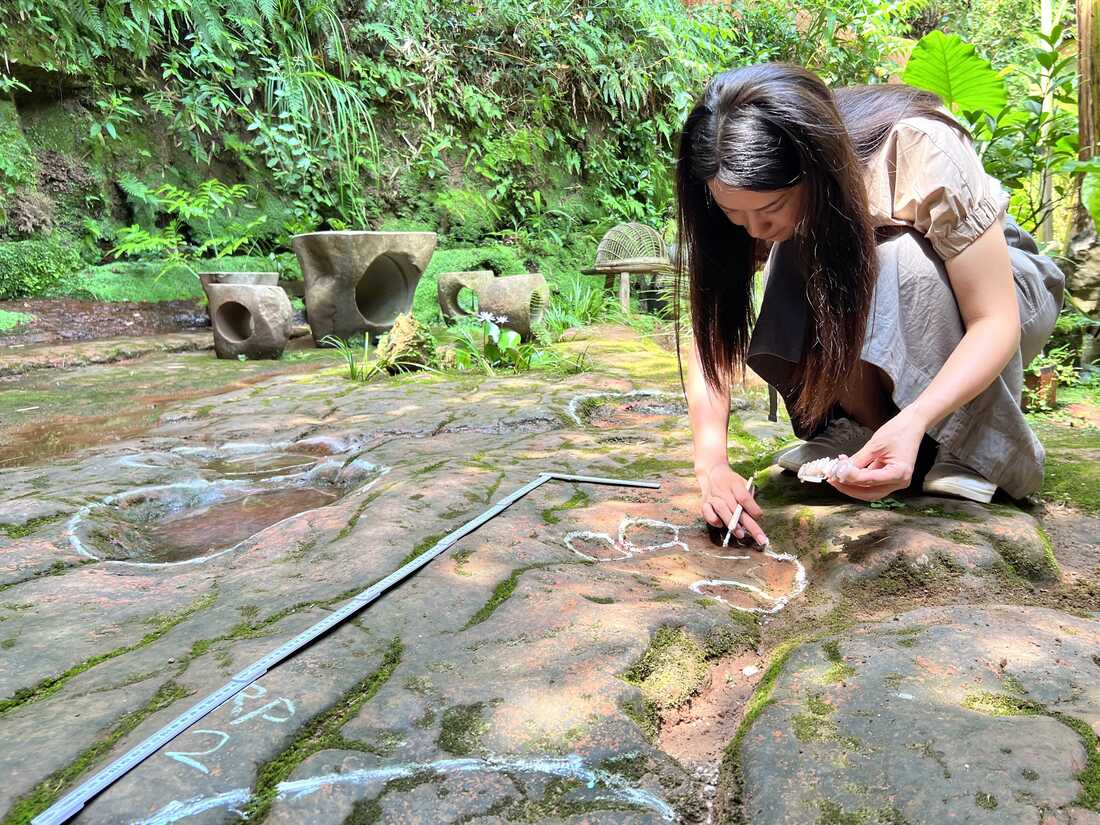A diner discovered 100 million-year-old dinosaur footprints in a restaurant
A diner discovered 100 million-year-old dinosaur footprints in a restaurant

Enlarge this image
toggle caption
Lida Xing
Lida Xing
If you need an excuse to head to brunch this weekend, allow yourself to consider the possibility that your French toast may cause you to expand scientific discovery and research.
Earlier this month, an observant patron at a restaurant in southwest China spotted a set of footprints in the stone floor of the courtyard where they were dining.
And after the proper authorities were called in to observe and identify, the paleontologists on the scene discovered a new set of footprints, which they say belong to two dinosaurs that walked the planet some 100 million years ago.
Paleontologist Dr. Lida Xing was one of the experts called in to investigate. He told CNN that his team used a 3D scanner to confirm that the imprints were left by sauropods.

Enlarge this image
toggle caption
Lida Xing
Lida Xing
Sauropods were plant-eaters with small heads and long necks and tails, and they were monstrous.
“All these dinosaurs hatched out of eggs that were about the size of a grapefruit. So they were kind of like popcorn to the carnivores of their time,” said Riley Black, a paleontologist and science writer.
“Their whole game plan, evolutionarily speaking, was to eat a whole bunch of plants and get big as fast as possible.”
And although the time for sauropods to walk the Earth may be long gone, this discovery denotes an exciting time for paleontological research.
“I would say that right now, China, in particular with regards to dinosaur footprints, is undergoing a fossil renaissance. A lot of new and exciting spots are being discovered,” said Scott Persons, a paleontologist at the College of Charleston. He has worked with the Chinese scientists who made this discovery, though he was not involved in this particular find.

Enlarge this image
toggle caption
Lida Xing
Lida Xing
“I have to say, I’ve never gone to a restaurant to discover dinosaur tracks,” Persons said.
Black said this type of encounter could be a reminder that the remains of fossils are still all around us.
“Even sometimes when I go on walks around Salt Lake City, a lot of the sidewalks that we have out there are made from early Jurassic sandstone. And I haven’t seen a dinosaur in there yet, but you’ll see little tracks made by proto-mammals and scorpions and spiders that were crawling all over these sand dunes. So there’s really a whole sort of urban paleontology.”
While fossil footprints might not seem quite as dramatic as finding bones, they allow paleontologists to take a unique glimpse into how dinosaurs lived.
“Tracks are fossilized behavior. That is the motion of a living animal. And usually, tracks are some of the only evidence that we have of dinosaurs’ social behavior,” Black said.
Black added that sauropods had to eat constantly to maintain their size — so their behavior in this case may have involved munching their way through their lush, green world.
In other words, there’s a chance they may have been brunching, too.
This story was adapted for the web by Manuela Lopez Restrepo
